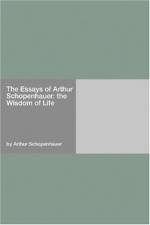|
This section contains 1,723 words (approx. 6 pages at 300 words per page) |

|
SOURCE: "What Do Ascetic Ideals Mean?" in The Birth of Tragedy and The Genealogy of Morals, translated by Francis Golffing, Anchor Books, 1956, pp. 231-99.
In the following excerpt from The Genealogy of Morals, which was originally published in 1887, Nietzsche contends that although Schopenhauer's aesthetic theory seemingly stresses disinterestedness, Schopenhauer instead considered art as a means to intellectual empowerment.
Schopenhauer made use of the Kantian version of the esthetic problem, though he certainly did not look upon it with the eyes of Kant. Kant had thought he was doing an honor to art when, among the predicates of beauty, he gave prominence to those which flatter the intellect, i.e., impersonality and universality. This is not the place to inquire whether Kant did not attack the whole problem in the wrong way; all I wish to point out here is that Kant, like all philosophers, instead of viewing the...
|
This section contains 1,723 words (approx. 6 pages at 300 words per page) |

|


